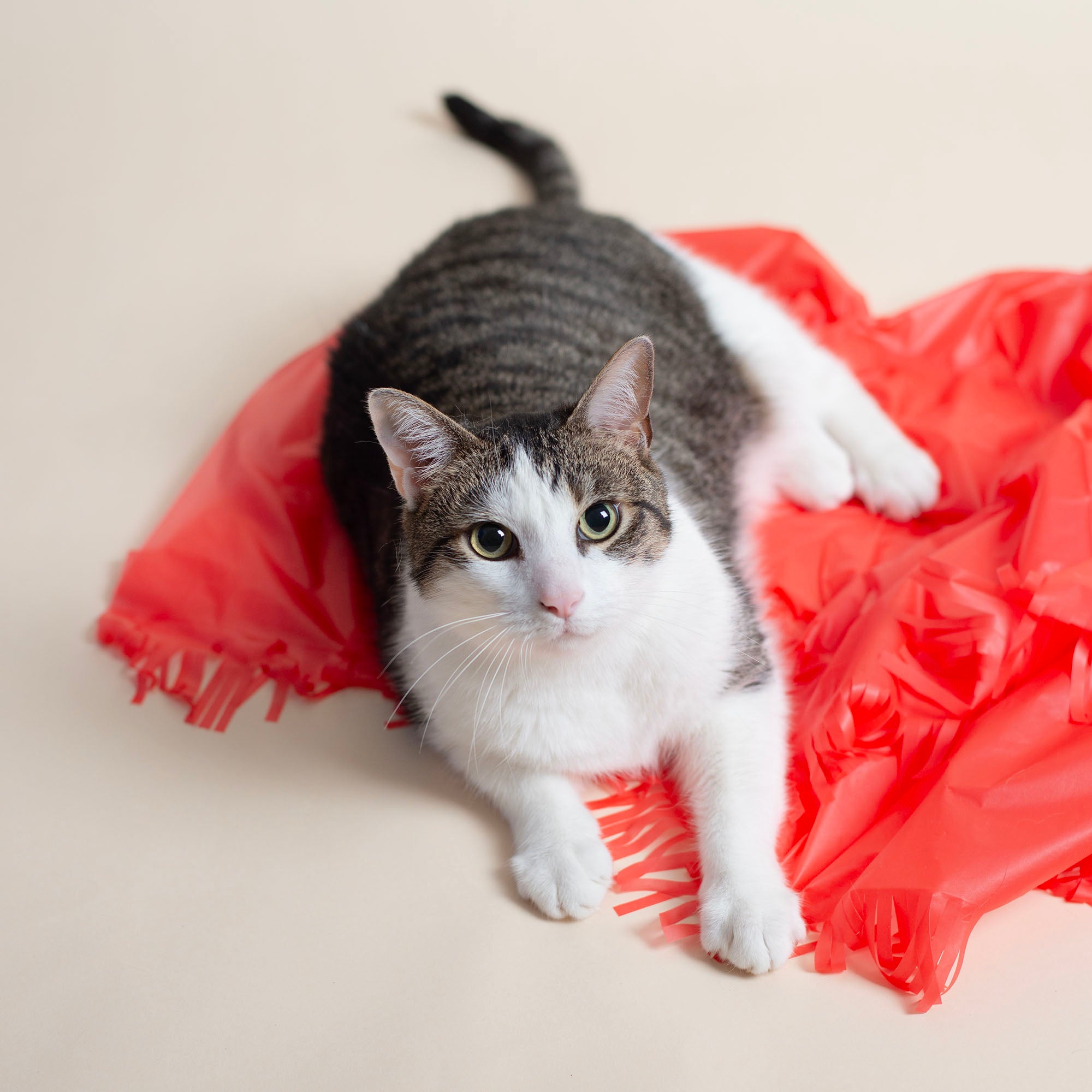3 Reaons Why Your Cat is Chasing You

Ever been unexpectedly pounced on by your cat? It’s easy to miss your cat hiding around the corner but hard to miss the moment they strike at your legs after.
Or maybe your cat is just constantly chasing you or family members around the house, playing too rough, scratching or biting your leg. While this might be frustrating, there are a few reasons why your adult cat or young kitten may be acting this way. Understanding this type of behavior will guide you to solutions that hopefully won’t leave you with scratch marks all over your legs.
1. Cats are natural hunters
Cats are natural predators, meaning they have an instinct to “hunt” for prey. While they may not need to hunt for the kibble you put in their bowl, those instincts don’t go away. So it makes sense they have to put their hunting skills to use elsewhere.
Your legs and feet make you the perfect substitute prey for cat attacks, especially when you move around the house often. You may not be as enticing as actual prey like mice or bugs, but you are an option. Especially if you imitate the behavior of the type of prey a feline would hunt for. Sometimes, walking around is sufficient enough, and if you add any quick movements that will entice your cat even more.
Once you understand where this chaotic behavior comes from, you’ll start to see the signs of a cat who likes to pounce. Most cats like to hide before they strike to get advantage over their prey. This usually means hiding around corners or in a safe space like a cat tunnel to create the element of surprise.

Other behaviors to look out for are dilated pupils or a tell-tale wiggle of their butt. Both of these are good indicators of a cat about to pounce, but by the time you notice, it might already be too late.
If your cat likes to chase you or pounce on your legs, never punish him. If you discipline your cat’s instinctual behaviors with negative reinforcement — like a squirt of water from a spray bottle — you’ll stress them out and leave them feeling anxious.
Instead, ignore any playful aggression directed toward you. This will teach your cat you’re not playing. But you’ll still need to set aside regular play time to give them an outlet for their need to hunt.
When they play with the right “prey” like toys or play rugs, reward them for good behavior. A simple prize like treats will let them know they’re doing something good and might result in behavior that isn’t so chaotic.
2. Your cat is bored
A cat who chases you can send mixed signals. At first, you may think they are angry or aggressive, but chances are they just want attention.
While every cat is different, there is no one solution for understanding a cat’s behavior. However, the one thing that is true across the board is that cats need attention.
Each cat has their own way of communicating how they feel, so it’s important to know your cat’s preferences and needs. Some cats are more vocal and will meow at you all night, while others will chase you around the house. Different delivery, but it might be the same message.
Luckily for you, your hands, legs, and feet don’t have to be their toys. Cats who enjoy playing (let’s be real, what cat doesn't?), want to do so with something mentally and physically stimulating. This will help divert their attention to something other than your body parts.
This means having toys around the house that your cat can chase like wand toys or wiggly balls.
When you find your cat chasing and swatting at your legs, you should immediately divert their attention to another toy and give them that same stimulation. Maybe throw the Wiggly Ball or Pong across the room multiple times. Or wave the Wiggly Wand around like a bird then let it fall to the ground. You’ll provide them with the thrill of chasing something and eventually succeeding.
3. Your cat is stressed
Every cat has a unique way of showing they are stressed. Some simply meow. Some cats hide, and a few might become physically aggressive. Stress can come from many factors inside your home.
Common stressors can trigger aggression, including a new environment, new people, and even pain or illness.
Just because your cat is showing aggressive behavior, that doesn’t always mean that your cat is aggressive. There is a difference between regular aggression, territorial aggression, and play aggression.
A cat who is regularly aggressive is usually experiencing pain or stress. A fearful cat will also show aggression. But keep in mind that it’s normal for cats playing to exhibit some aggression. They are hunters, after all!
If you’ve ruled out any serious medical conditions with your vet, it’s time to see what’s stressing out your cat.
Be patient when redirecting behavior problems
While there might not be one solution to redirecting your cat’s need to pounce, one thing remains true: you must be patient.

You can’t change the behavior of your cat overnight and you must give them time to relax and adjust to their surroundings. Take things slow and never punish your cat for being aggressive because this will only stress them out even more.
Be sure to provide your cat with the most comforting environment possible. That means a clean litter box, regular feeding schedule, and playtime too. A healthy relationship with your cat means adjusting to your cat’s schedule, not the other way around. When your feline fur-iend feels like playing, break out the wand toy. Netflix can wait!








